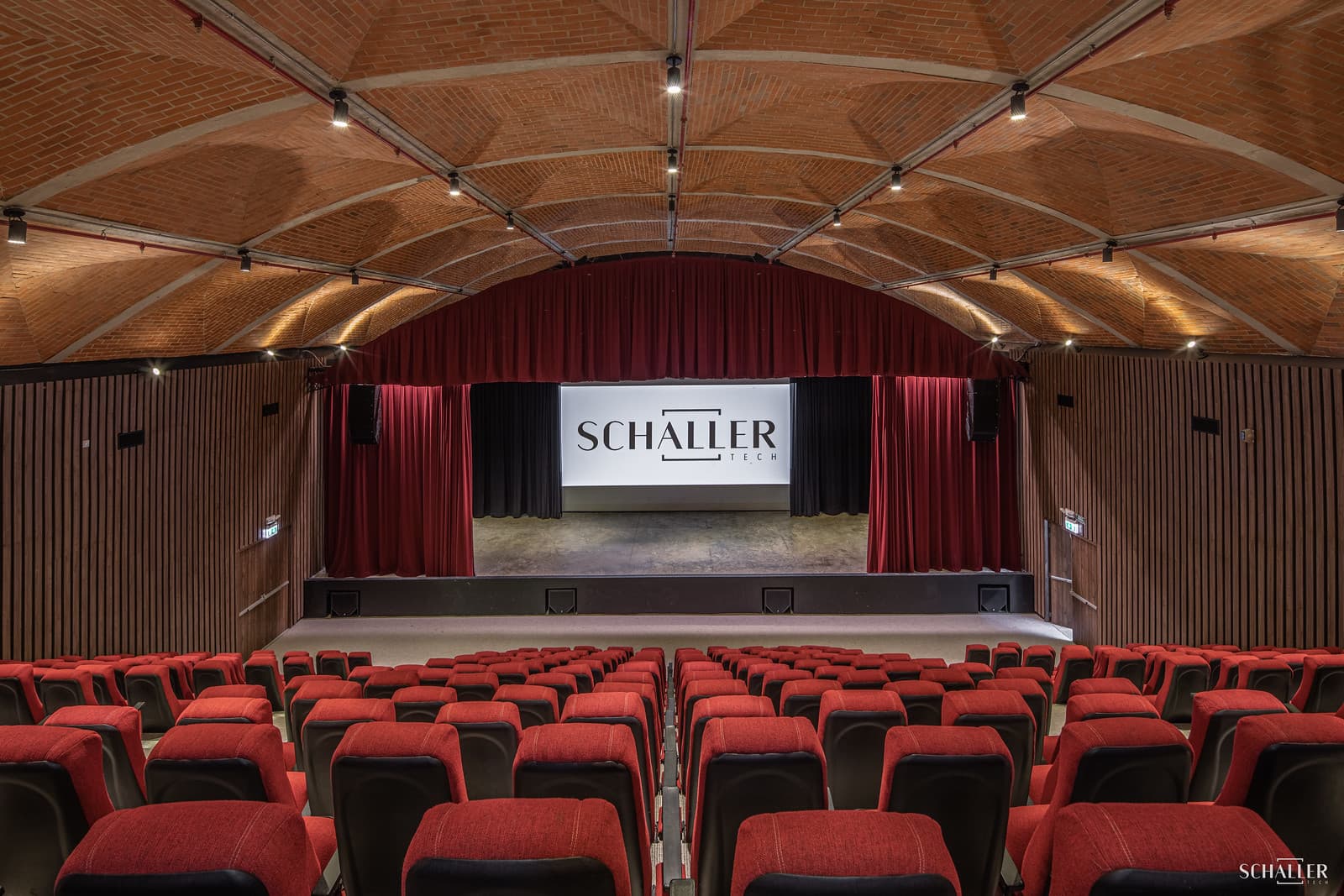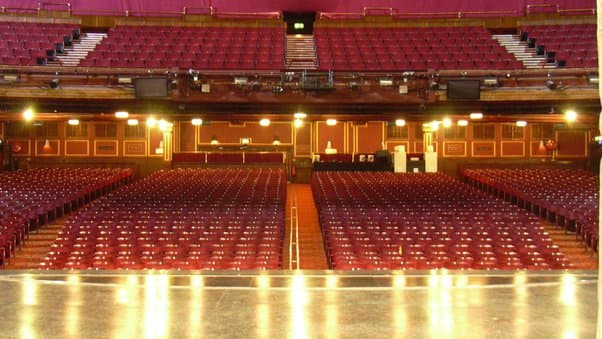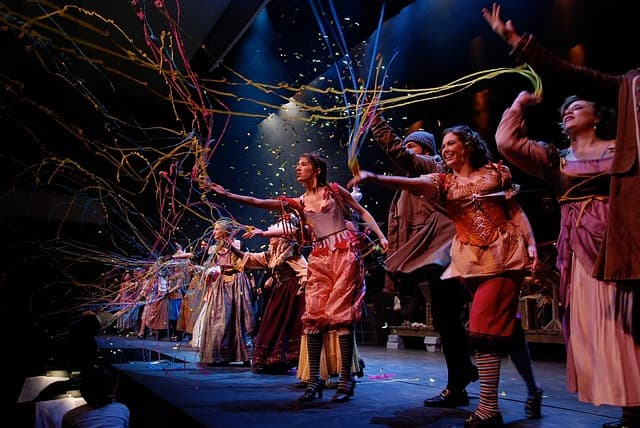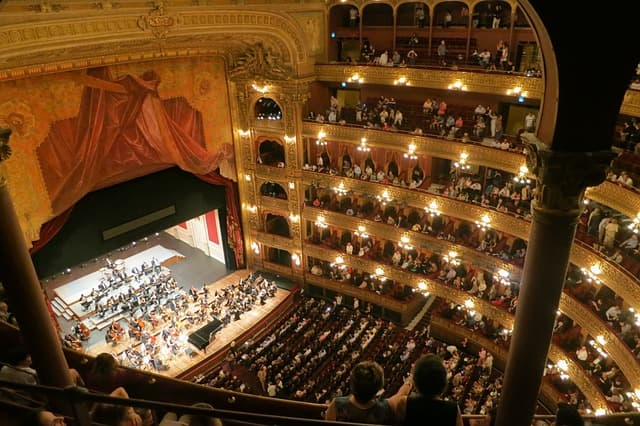With the appearance of small theaters, a new stage began in U.S. theatrical life. On the stages of amateur, semi-professional and professional “small theaters” they began staging the plays of G. Ibsen and I. Shaw, A.P. Chekhov and L.N. Tolstoy, the work on development of national drama and stage art in general was actively conducted.
Models for small theaters in the United States were the free art theaters of Europe, created on a collective basis by selling subscriptions and making membership dues.
In 1912 the first small theater appeared in the United States, and within a few years there were about 200 of them. The life of most such groups was short-lived, only a few of them managed to achieve relative stability, and their activities were of great importance to the development of American theater.
The pioneer of the movement was the Chicago Little Theater, organized with the participation of the young poet Maurice Brown in a small warehouse. The capacity of the hall was only 90 people.
Members of the theater company were not professionals, the usual stage clichés caused them a negative attitude. Working in the genre of poetic drama, staging the works of Euripides, H. Ibsen and I. Shaw, the actors and directors tried to find new means of expression, allowing to create full of life scenic images.
The Chicago Little Theater lasted about five years, but the work it had begun was continued in the work of such theater groups as Provincetown, Washington Square Players, and others.
In the summer of 1915, resting on the Atlantic coast of New York among other progressive young people talented writers John Cram Cook, John Reed and Theodore Dreiser initiated the creation of the theater “Provincetown”, the main objective which was the promotion and development of new American playwrights.
The organizational program outlined the group’s main goals: “the creation of a stage where a playwright with poetic, literary, and dramaturgical ambitions could oversee the production of his plays without submitting to the demands of a commercial entrepreter.” According to D. C. Cook, Provincetown was also necessary to “promote the writing of the best American plays and to stage each of those plays in the best possible way.
The one-act plays, written and staged in a short time, were an unprecedented success, and in the winter the Provincetown troupe traveled to New York with their performances. In the big city it was once again a resounding success. It is noteworthy that the Liberal Club has provided the young theatrists his room, as if to recognize their activities necessary for modern American society.
The following summer the theater resumed its work in the small seaside town of Provincetown, by that time the company had 30 members, the number of season ticket holders has grown to 87.
In July 1916 with “Provincetown” began to cooperate talented American playwright Yu. O’Neill. It was at this theater that his first and all subsequent works of the 1920s were staged.
In the autumn of 1916, “Provincetown” was transformed into the Playwright’s Theater (Playwright’s Theater), the activities of the amateur group turned to a professional basis. Gradually the number of season ticket holders also increased, and by 1917 there were already 450 of them.
Many American theater historians call the Provincetown the cradle of new drama. During the first six years of its existence, 93 plays were staged on its stage, and 47 of them were authored by American writers Y. O’Neill (16 plays), S. Glaspell (10 plays), John Reed, and others.
The productions of O’Neill’s plays were the highest artistic achievement of Provincetown. Note that the selection of actors, development of scenery for the plays and rehearsals were held with the direct participation of the playwright, and in one of the performances, he even played a small role.
Important innovations concerning stage design were tried at the theater. Taking the path of simplification and stylization of decorative design, directors and artists were looking for new techniques to expand the plastic scene, creating new lighting effects.
The play Emperor Jones was staged with such technical innovation as a rigid cyclorama with a dome made of reinforced concrete. Such a dome perfectly reflected the light, did not wrinkle and did not move when touched. In addition, this detail created the sense of depth required in all scenes of the play. Reaction to the production of Emperor Jones was overwhelming; the technical effects impressed audiences and theater critics alike.
Over the years, the Provincetown Theater has been the object of intense government scrutiny: it has closed several times, changed its name, but its purpose has remained the same.
Severe blow to the theater company was the departure from the leadership of D. C. Cook, for three years, beginning in 1923, was headed by a triumvirate – C. McGone, E. O’Neill and R. E. Jones.
At the same time is the expansion of the repertoire of the theater, overcoming its one-sidedness. With the help of O’Neill on the stage of “Provincetown” were staged works of European classics and creators of the new European drama ( “Georges Danden” Moliere, “Love for Love” Congreve, “The other side” Gasenklewer, “Sonnets of ghosts” Strindberg).
The glorious history of Provincetown came to an end in December 1929: the management was unable to cope with the financial problems it faced, which led to the dissolution of the company and the closure of the “first serious theater” in the United States.
An equally important role in the renewal and development of theater in the United States was played by the Guild Theater, based on the popular Washington Square Players troupe of 1915-1918.
The main goal for the organizers of the Guild was to create an artistic theater in America, free from commercial considerations. The focus here was on the development of new methods of acting and the development of staging techniques, based both on the best traditions of national art and on the achievements of modern European playwrights.
The theatrical program document stated that “the plays accepted for staging must have artistic merit, preference will be given to American plays, but we will include in our repertoire the works of well-known European authors, which have been ignored by the commercial theater.”
Initially the Gilda Stage was dominated by European productions, due to the relative scarcity of American drama, but gradually the number of national plays increased.
Philip Möller, who became head of the Guild Theater after the death of E. Reicher, was no less a talented stagehand. This man was not only a talented director and actor, but also a gifted scenic artist and author of a number of dramatic works. Möller, in love with the art of his native theater, refused to stage productions anywhere but on the Gilda stage.
Unlike many other directors who believed that acting was the result of hard work, Möller believed in intuitive art. The most important thing for him was the unconscious beginning that defied logic and sober calculation and was the source of inspiration for talented actors.
According to Möller, to achieve the best results during the rehearsals of a particular play, it was necessary to keep the perception of the work fresh. At the same time, almost without explaining anything to his actors, the director demanded that they feel the atmosphere and mood of what was happening. Möller’s most successful productions were those in which experienced actors took part, he was not able to work with young performers.
Many contemporaries called Philip Moeller “temperamental artist with inexhaustible imagination. In addition, he was a subtle psychologist who could read the souls of people and sharply feel all the shades and halftones, which has been of great help to him in the production of Eugene O’Neill’s works.
Under Möller’s direction, the Guild Theater has staged Rice’s “The Counting Machine,” Shaw’s “St. Joan” and “Androcles and the Lion,” Lawson’s “Singing Hymns,” “Strange Interlude” and O’Neill’s play “Mourning – Electra’s Fate.” All have been recognized as the Gilda Company’s finest artistic achievements.
The second half of the 1920s was the heyday of the theater “Guild”, at this time came the highest rise of its artistic and commercial success.
In 1925, the company moved into a new, specially designed building, the auditorium which was designed for 1000 people. In addition, an increased number of season ticket holders: in New York there were about 20 thousand and in the ten largest cities in America, which toured the actor’s company – 30 thousand.
Gradually in the “Guild” was formed a new acting school. The leaders of the theater were well aware that successful productions required a permanent company. It had to work under the guidance of a permanent director, and the repertoire of the theater had to be made sufficiently voluminous.
By the season of 1928/1929-ies in the theater company already had 35 people, and all the actors were divided into three groups, each of which was charged with performing two plays from the repertoire of the “Guild” in New York and the two largest cities in the United States. Gradually the productions of the Guild Theater came to be regarded as a standard of high artistic excellence, and many small theaters in the United States sought to reach their level.
However, unprecedented success caused a rebirth of the theater: by the mid-1930-ies among the directors of the Guild began to play a major role commercialists who care only about making large profits. These circumstances have led to significant changes in the repertoire of the theater: the emphasis was placed on cash productions, and the production of less profitable plays met with serious obstacles from the management. Thus, by the early 1940s the Guild had lost its former artistic and social importance, becoming an ordinary commercial theater.








